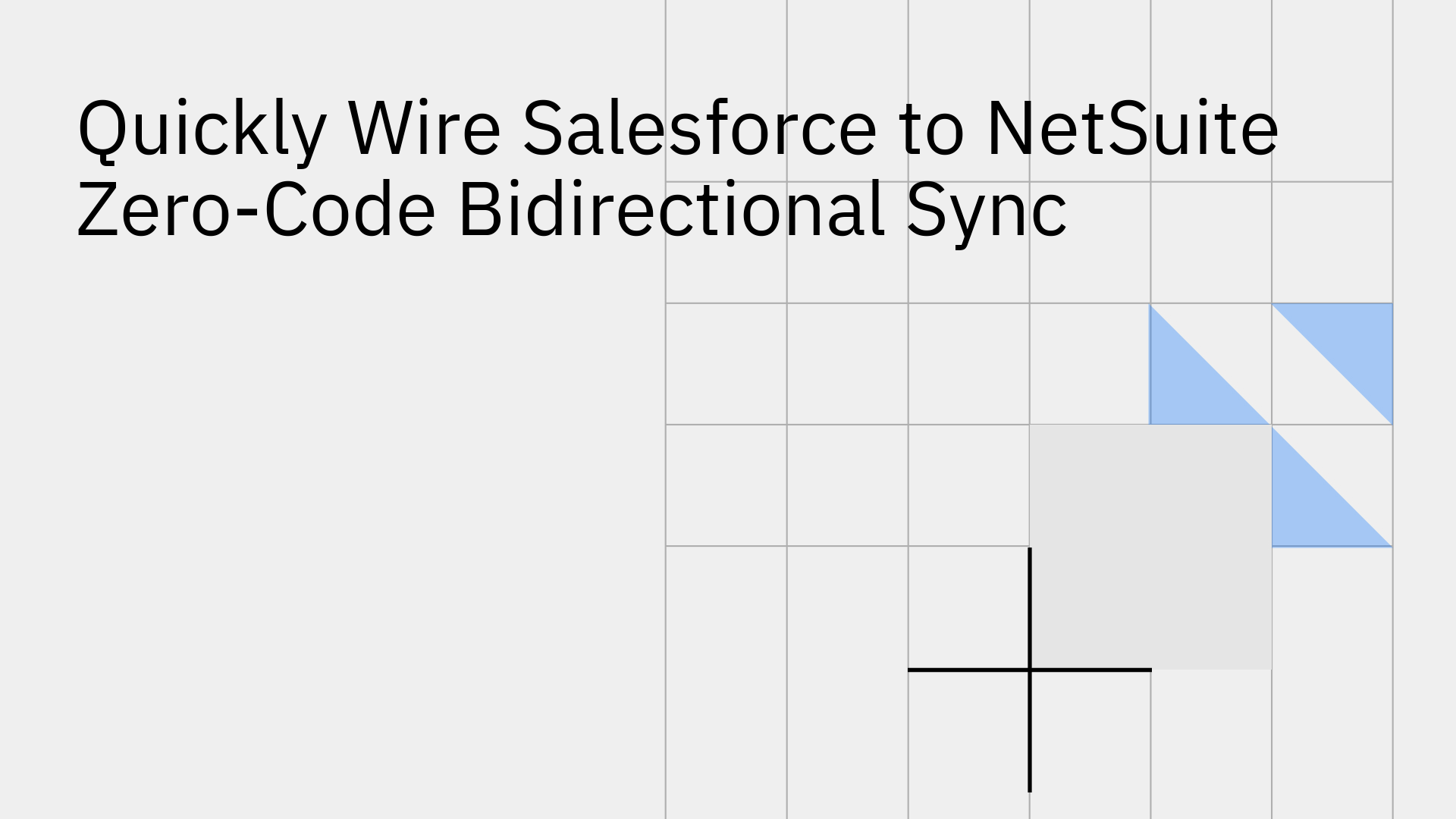
In modern business architecture, Salesforce is the definitive system of record for customer relationships (CRM), while NetSuite manages the financial and operational core (ERP).
This is a pervasive challenge; while a significant number of mid-market companies rely on both CRM and ERP systems, only a fraction achieve a true, real-time integration between them. This gap results in data latency and process bottlenecks that directly impede business velocity and growth. For a deeper analysis of these architectural challenges, see The Complete Guide to Salesforce-NetSuite Integration: Achieving True Bi-Directional Sync.
When core operational systems like Salesforce and NetSuite fail to communicate, the consequences cascade throughout the organization, degrading data integrity, slowing operational tempo, and ultimately damaging the customer experience.
The most immediate cost of disconnected systems is the reliance on manual data reconciliation. When a sales deal closes in Salesforce, an employee must painstakingly re-key customer details, product information, and pricing into NetSuite to generate a sales order.
This repetitive, low-value work is not just inefficient; it's a critical failure point. A single human error can lead to incorrect orders, flawed invoices, and unreliable financial reports, directly eroding customer trust and creating compliance risks.
Data latency between Salesforce and NetSuite injects crippling delays into core business processes. A sales representative may promise a delivery date without real-time visibility into inventory levels managed in NetSuite. The finance team may wait days for sales data to be manually entered before closing the monthly books.
These delays slow the entire quote-to-cash cycle and directly contribute to a poor customer experience, marked by slow order fulfillment and frustrating billing errors. Achieving a seamless data flow is a key strategy for improving operational agility and, by extension, customer satisfaction.
You can explore more strategies in The 2025 Guide to NetSuite-Salesforce Integration: Strategies for Seamless Data Flow.
When data lives in separate, asynchronous systems, it becomes impossible to establish a single source of truth for the customer journey. Departments are forced to make decisions based on incomplete or conflicting information, which undermines collaboration and strategic planning.
A cohesive operational framework requires integrating these systems to provide a unified view of customer interactions and financial data, which is essential for enhancing operational efficiency [1].
Many organizations attempt to bridge the Salesforce-NetSuite gap using traditional integration methods like custom code, ETL tools, or generic iPaaS platforms. While these approaches can connect systems, they are often ill-suited for this use case, failing to deliver the real-time, bidirectional synchronization that modern operations demand.
These legacy solutions are typically complex, carry a high total cost of ownership, and require specialized engineering resources to build and maintain. You can find more details on Stacksync's approach to Salesforce and NetSuite integration for enterprise data consistency.
Developing a custom point-to-point integration offers ultimate flexibility but at an unsustainable cost. These solutions are expensive to build, time-consuming to deploy, and notoriously brittle—they break easily with API changes or system updates, creating significant technical debt. Similarly, traditional ETL (Extract, Transform, Load) tools are fundamentally limited by their batch-oriented, one-way architecture. They move data on a schedule, not in real-time, which creates data staleness by design and fails to provide true data consistency. To understand why this is insufficient, you must master real-time sync for CRM and ERP integration.
Generic Integration Platforms as a Service (iPaaS) are powerful tools designed for enterprise-wide orchestration, connecting hundreds of applications with complex, branching workflows [2]. While they have their place, using them for a direct Salesforce-to-NetSuite sync is often a case of architectural overkill. The tradeoff for their broad power is significant complexity. Setup requires deep API expertise and ongoing management, negating the promise of a simple solution and burdening teams with unnecessary overhead.
The modern, purpose-built approach to connect Salesforce with NetSuite is a solution that is both "zero-code" and "bidirectional." This is where a dedicated platform like Stacksync excels, providing a robust, efficient, and reliable alternative that avoids the pitfalls of traditional methods.
With a modern tool like Stacksync, the integration timeline shrinks from months to minutes. Our platform is engineered to handle the underlying complexity, so you can focus on your business logic. The process is remarkably straightforward:
Opportunities to NetSuite Sales Orders). Our platform provides pre-built templates and automatic mapping suggestions to accelerate this crucial step.This entire no-code setup can be completed in under five minutes, eliminating the need for developer intervention and dramatically reducing time-to-value.
Once connected, you unlock powerful automated workflows that drive efficiency across the entire business. Common use cases include:
Disconnected Salesforce and NetSuite systems create daily inefficiencies, introduce critical data errors, and fracture your view of the business. While traditional integration methods exist, they are often too slow, complex, or costly to serve the needs of a fast-moving, modern enterprise.
A modern, zero-code, bidirectional synchronization solution like Stacksync offers the fastest and most reliable way to connect Salesforce with NetSuite. By adopting this purpose-built approach, you achieve guaranteed data consistency, automate mission-critical workflows, and establish a single source of truth across your sales and finance functions. Empower your teams with the accurate, real-time data they need to operate efficiently and drive sustainable growth.
To dive deeper into building a seamless integration strategy, explore our Salesforce NetSuite Integration: Real-Time Sync Guide 2025.